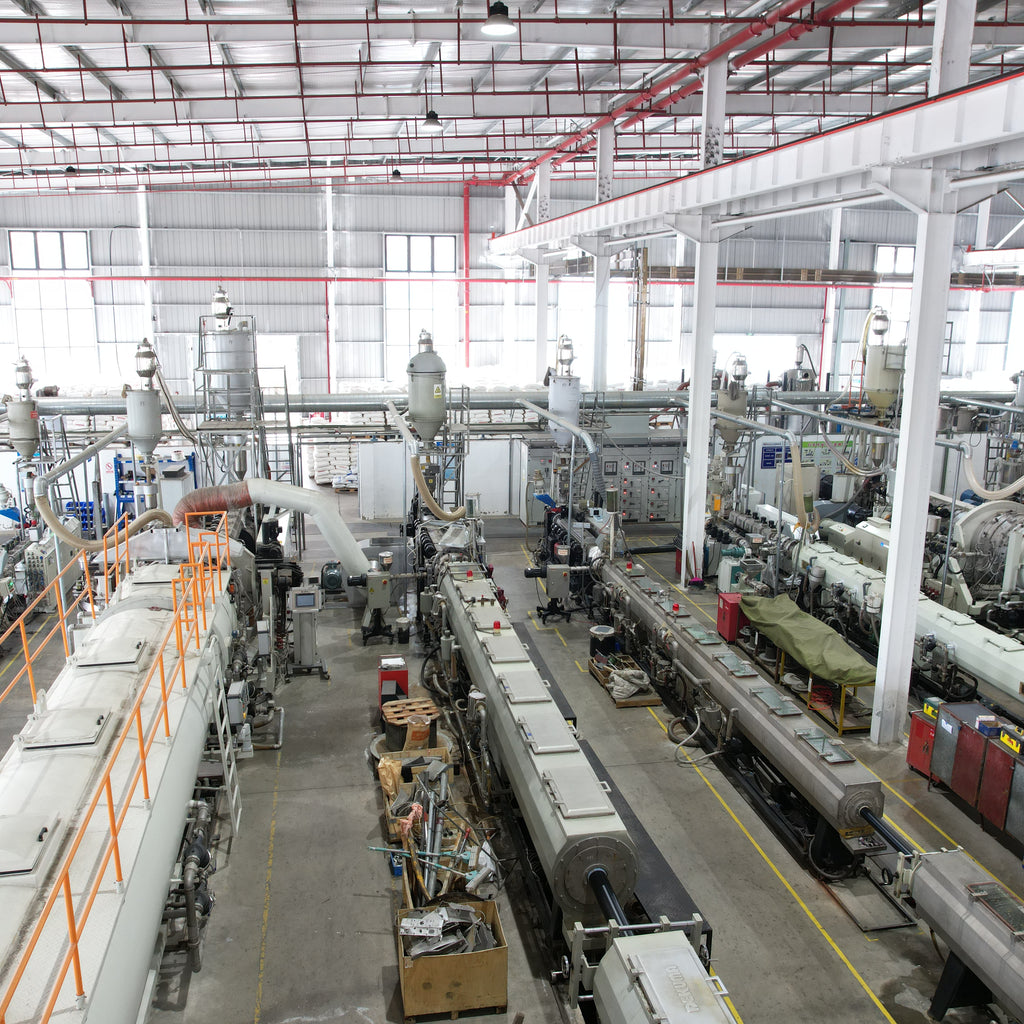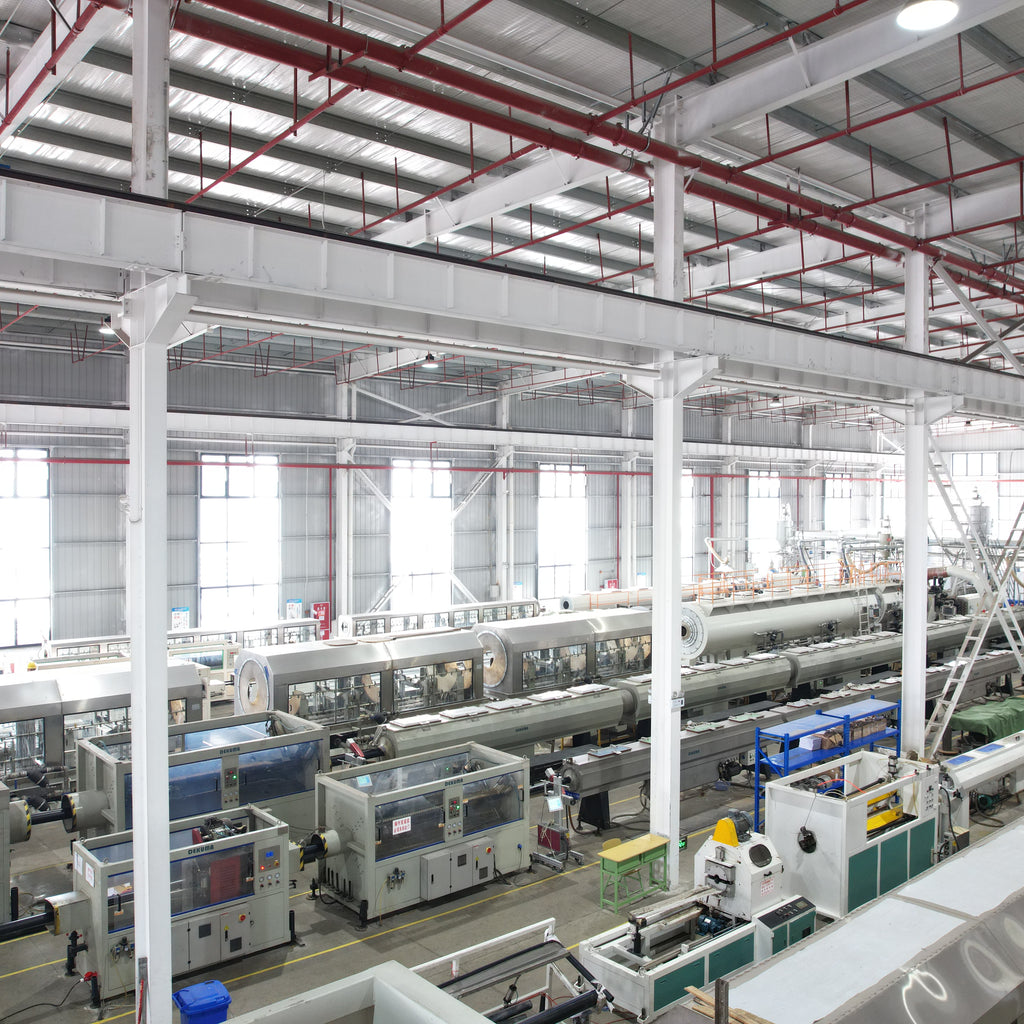Sidebar
Categories
Recent Articles
-
UHMWPE Pipes: The Trusted Choice for China’s High-Stakes Infrastructure December 09, 2025
-
UHMWPE Pipes: Performance, Compliance, and Cost for China’s Infrastructure December 08, 2025
-
UHMWPE Pipes: Cutting Costs, Boosting Durability in China’s Infrastructure December 05, 2025


Customization
We can also customize products with different specifications, colors, uses, etc. according to your needs, you can contact us and provide your purchase order for customization.
Global Pipeline Industry: New Projects, Technological Breakthroughs, and Regulatory Updates
North America: Infrastructure Expansion and Operational Hurdles
In the United States, pipeline infrastructure is undergoing significant transformation. The Matterhorn Express Pipeline, a 580 - mile project in the Permian Basin, has recently started operations. This new natural gas pipeline, the first in three years in the region, is crucial for alleviating gas bottlenecks. By enabling smoother gas flow to Gulf Coast export hubs, it not only boosts the shale output in West Texas but also enhances the region's competitiveness in the global energy market. The pipeline has a substantial capacity, allowing for the transportation of large volumes of natural gas, which is expected to meet the growing domestic and international demand.
However, not all pipeline projects are advancing as smoothly. Kinder Morgan faced a major setback when a U.S. federal appeals court halted its natural gas pipeline project in Tennessee. The decision was based on environmental and regulatory concerns, highlighting the complex legal landscape that pipeline operators must navigate. Such regulatory challenges can lead to significant delays and increased costs for projects, potentially affecting the overall energy supply chain.
Canada is also making progress in its pipeline endeavors. The Trans Mountain Expansion Project, which aims to triple the capacity of transporting crude oil from Alberta's oil sands to the West Coast, is now 80% complete. Once fully operational, it will open up new export opportunities to Asia, strengthening Canada's position as an energy exporter. This project is not only about increasing capacity but also about diversifying Canada's energy markets, reducing its reliance on the traditional U.S. market.
Asia: Ambitious Pipeline Initiatives and Technological Advancements
In China, two significant pipeline projects are underway. The Jilin Petrochemical - Jilin Oilfield Carbon Dioxide Pipeline Project (Phase I) was recently launched in Songyuan City, Jilin Province. This will be the largest and longest supercritical/dense - phase carbon dioxide pipeline in the country. With a design length of nearly 400 kilometers, it will be constructed in two phases. The first phase, spanning 282.26 kilometers, is designed to transport 3.3 million tons of carbon dioxide per year. This project is a crucial part of China's efforts to achieve its "dual - carbon" goals. By integrating the carbon capture, transportation, enhanced oil recovery, and storage (CCUS) capabilities of local enterprises, it aims to achieve a "win - win" situation of carbon reduction and increased oil production.
Another major project is the expansion of the natural gas pipeline network. The China - Russia Eastern Gas Pipeline, already in operation, is seeing further developments. Additionally, new domestic pipelines like the proposed Changchun - Shijiazhuang Gas Pipeline are in the planning and development stages. These pipelines are essential for meeting China's growing energy demand, especially for clean energy sources like natural gas.
In India, the Pradhan Mantri Urja Ganga project, a 2,655 - kilometer gas pipeline network, is set to be completed by the end of this year. This project will connect the eastern states of India to the national gas grid, providing clean energy to millions of households and industries. It is a significant step towards increasing the share of natural gas in India's energy mix, aiming to raise it from the current 6% to 15% by 2030.
Europe: Geopolitical Pressures and Green Energy Pipeline Developments
Europe's pipeline industry is facing a complex scenario. The Nord Stream 2 pipeline, which was intended to double the amount of Russian gas flowing directly to Germany under the Baltic Sea, remains in a state of uncertainty. Due to geopolitical tensions between Russia and Ukraine and subsequent EU sanctions on Russia, Germany has suspended the certification process. This has left billions of dollars of investment in limbo and has forced European countries to seek alternative sources of gas supply.
On the positive side, the continent is making significant progress in the development of hydrogen pipelines as part of its green energy transition. The HyUnder project in the Netherlands, a collaboration between major energy companies, is on track to build a 100 - kilometer hydrogen pipeline network by 2026. This initiative is crucial for the large - scale adoption of hydrogen as a clean energy carrier, especially in the industrial and transportation sectors. Hydrogen pipelines are seen as a key infrastructure for reducing Europe's carbon footprint and achieving its ambitious climate goals.
Africa: Pipeline Projects Amidst Security and Development Challenges
In Nigeria, the Nigerian National Petroleum Company Limited (NNPCL) has announced a $1.2 billion investment in the rehabilitation and expansion of the Trans - Saharan Gas Pipeline. This project aims to transport natural gas from Nigeria to Algeria, with potential extensions to Europe. However, pipeline vandalism and illegal refining activities pose significant challenges. To address these issues, the government has deployed a specialized task force to safeguard the infrastructure. The successful implementation of this project could transform Nigeria into a major gas exporter in Africa, bringing economic benefits and enhancing energy security in the region.
In Mozambique, the Rovuma LNG project has reached a critical milestone with the commencement of onshore pipeline construction. The 42 - inch pipeline, spanning over 400 kilometers, will connect the offshore gas fields to the processing plant. Backed by international energy giants such as ExxonMobil and Eni, this project is set to make Mozambique a significant player in the global LNG market, with exports expected to start by 2027.
Technological and Regulatory Updates
Technologically, the pipeline industry is witnessing remarkable advancements. For instance, pipeline inspection is becoming more efficient with the use of advanced drones and sensors. These tools can detect leaks and structural issues more accurately and quickly than traditional methods. In the area of pipeline materials, new corrosion - resistant and high - strength materials are being developed, which can increase the lifespan of pipelines and reduce maintenance costs.
In terms of regulation, safety remains a top priority. The U.S. Department of Transportation's Pipeline and Hazardous Materials Safety Administration (PHMSA) has increased grant funds to support state pipeline and underground gas storage safety programs. This funding will be used to improve safety measures, conduct inspections, and upgrade aging infrastructure, ensuring the safe operation of pipelines across the country.
In conclusion, the global pipeline industry is at a crossroads, with new projects, technological breakthroughs, and regulatory changes shaping its future. As countries strive to meet their energy demands while also addressing environmental concerns, the pipeline infrastructure will play a crucial role in ensuring a reliable and sustainable energy supply.
Sample Block Quote
Nam tempus turpis at metus scelerisque placerat nulla deumantos sollicitudin delos felis. Pellentesque diam dolor an elementum et lobortis at mollis ut risus. Curabitur semper sagittis mino de condimentum.
Sample Paragraph Text
Lorem ipsum dolor sit amet, consectetur adipiscing elit. Morbi ut blandit risus. Donec mollis nec tellus et rutrum. Orci varius natoque de penatibus et magnis dis parturient montes, nascetur ridiculus mus. Ut consequat quam a purus faucibus scelerisque. Mauris ac dui ante. Pellentesque congue porttitor tempus. Donec sodales dapibus urna sed dictum.

